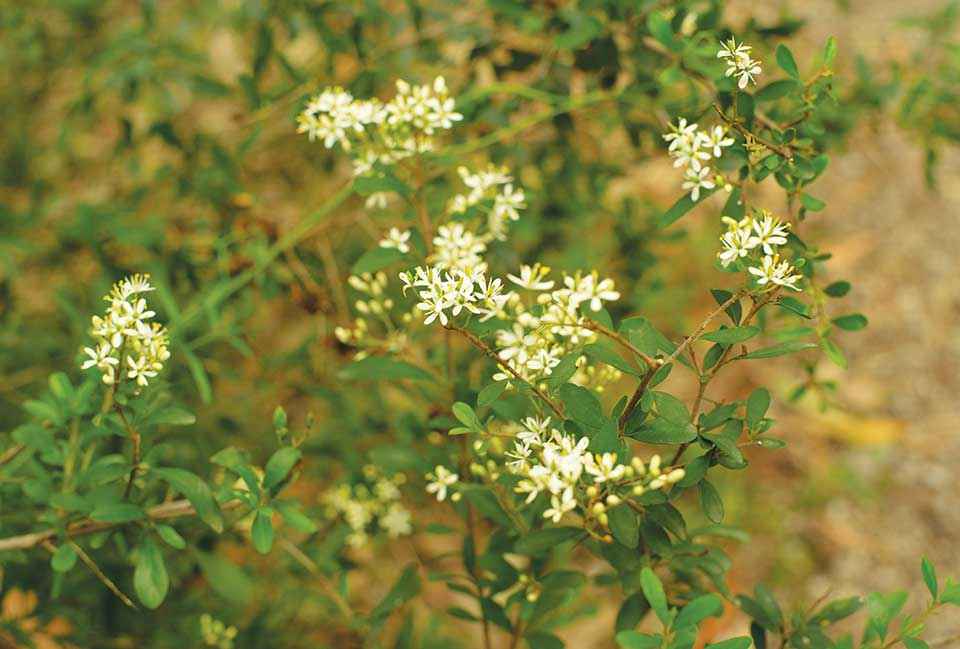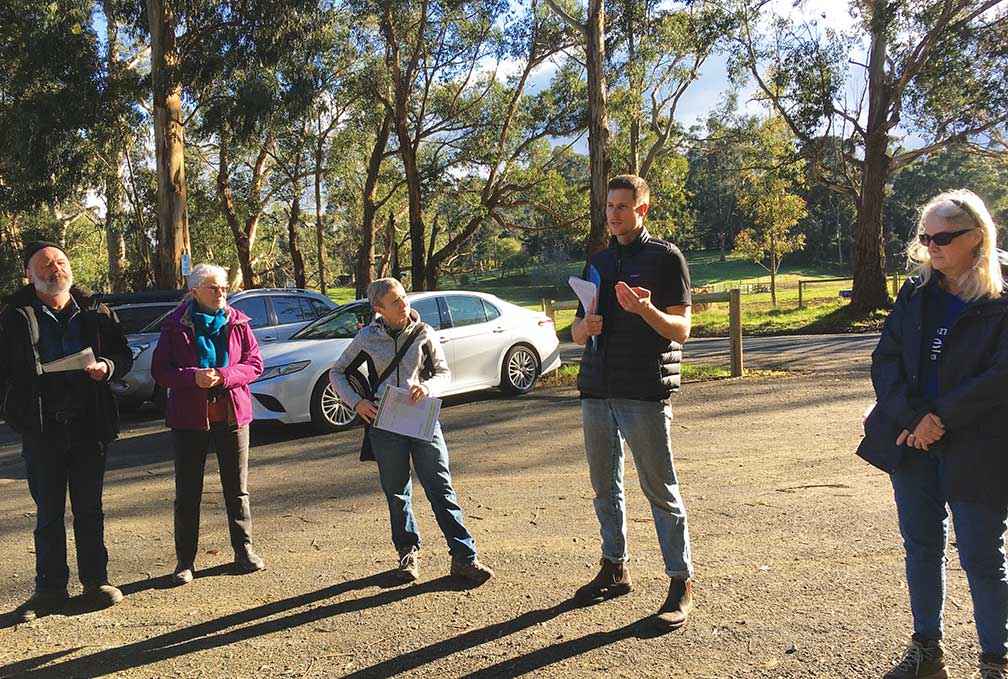Victorian Landcare Magazine - Winter 2022, Issue 84

Climate change and biodiversity loss are affecting nature’s rhythms and patterns.
Making decisions about how to best manage ecosystems requires timely and up to date scientific information. Earthwatch Australia has developed ClimateWatch – the first continental scale phenology (the study of seasonal and cyclic natural phenomena) program in the southern hemisphere. The program revolves around the free ClimateWatch app.
Using citizen sourced photography verified by scientists, the ClimateWatch app has tracked changes in the behaviours of Australian plants and animals since 2009. This user-friendly app acts as a powerful tool to educate and empower the public to become stewards of their local environment.
Land managers can use the app to create a ClimateWatch walking trail in their park or reserve. This helps to fill data gaps, develop plans, and educate the public on the importance of each species within the ecosystem balance.

Above: ClimateWatch Program Coordinator Luke Richards talks to community groups at Parks Victoria’s Haining Farm, Yarra Valley, at the launch of their ClimateWatch trail in 2021.
Earthwatch has collaborated with the Cumberland Land Conservancy in Western Sydney to develop three ClimateWatch trails. By hosting guided walks along these trails, the Conservancy can educate the community about the value of high conservation value bushlands that act as refuges for critically endangered species. As participants take photographs of the flora and fauna, they feed back to the app and add more data on species behaviour and change over time.
According to phenologist and researcher Dr Lynda Chambers, repeated observations of plant and animal phenology provide important indicators of global change.
“The data becomes particularly scientifically valuable when the same individuals are regularly observed at the same locations over time. Understanding species phenology not only helps us to understand the impacts of climate change. It can also help in management decisions, such as identifying potentially vulnerable native species and allows for time-related prioritisation of the removal of invasive species,” Lynda said.
Trails can play an important role in directing the efforts of citizens, community groups, councils and government authorities to high conservation value areas. The Lilly Pilly Link Walk near Tidal River in Wilsons Promontory guides visitors to observe silver wattle, white bellied sea eagles and sweet bursaria. As well as enjoying the walk visitors can add their photographs of the trail to the app and participate in the future conservation of the area.
William Playne from Parks Victoria said the trail was an opportunity for citizen scientists.
“Visitors to the area can contribute to monitoring change in a meaningful and positive way,” William said.
There are currently 30 ClimateWatch trails in Victoria, and 85 nationally. ClimateWatch intends to increase the numbers of trails to the hundreds across the many unique landscapes of Australia.
With support from the Victorian Government’s Volunteering Innovation Fund, ClimateWatchers can now search the trails within their state, the species they can expect to find, and the path that lays ahead of them on their smart phones.
Beyond the science, trails can have a positive impact on the community. Immersive experiences in nature are an important
part of healthy and happy neighbourhoods. The ClimateWatch trails provide a unique, action-oriented opportunity to discover and deepen relationships with nature.
Jane Griffin from the Royal Botanic Gardens Victoria (RBGV) hosts regular community walks at the Melbourne gardens using ClimateWatch trails. According to Jane, children as young as five master the app quickly.
“They become totally engaged, recording current growth phases in real time. Participants are fascinated and concerned about being able to record tangible climate change within their lifetimes, but they love knowing observations recorded will help shape Australia’s scientific response to climate change,” Jane said.
Jane’s network of volunteers at the RBGV use the app to educate and empower teachers and students on school field trips, and increase the awareness of biodiversity with community groups, even those from urban environments.
The ClimateWatch app was developed by Earthwatch Australia with the University of Melbourne and the Bureau of Meteorology.
To search for trails, go to www.climatewatch.org.au/trails
Tanaya Joshi is Impact and Communications Officer, and Luke Richards is ClimateWatch Program Coordinator at Earthwatch Australia.
For more information email lrichards@earthwatch.org.au